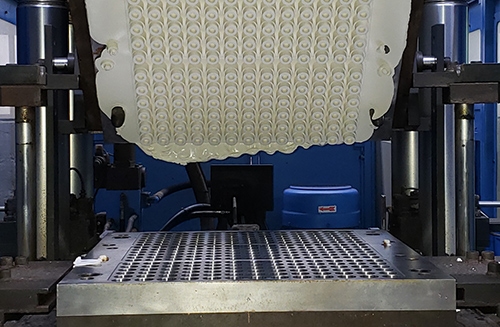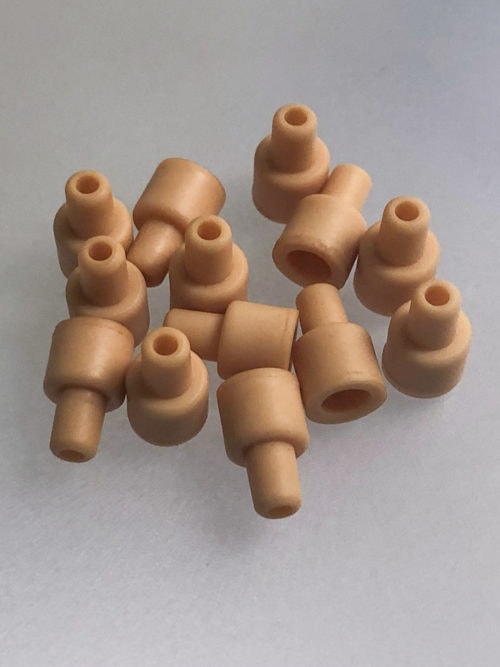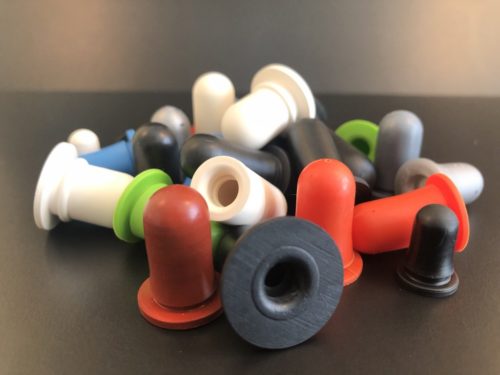The compression molding process fills a heated mold cavity with a preheated polymer material. Once filled, the mold gets sealed and compressed to push the polymer into all areas of the mold cavity. Compression molding is a versatile process that can accommodate a variety of design complexities, lengths, and thicknesses. Compression-molded components are strong and durable, making them ideal for use in many different industries and applications.
Compression Molding Process
The compression molding process breaks down into five primary steps:
-
1. Tooling
Before the actual compression molding process can begin, machinists must create the two-part metallic mold. Depending on the intended size of the production run, molds are typically made from aluminum or tool steel.
-
2. Preforming
Many compression molding projects use preformed materials that are weighed and cut into the shape of the tool in advance for easier insertion into the mold. Though thermoset granules may also be used in compression molding, preformed materials can help to minimize flashing and improve the quality of the molded part.
-
3. Set-up
The machined tool is installed onto the press and heated to the desired temperature, which may vary depending on the nature of the exact thermoset material being used.
-
4. Molding
The preformed material is placed into the mold and the mold closed by the press. The top portion of the mold is compressed into the bottom portion of the tool, compressing the polymer into the mold cavity and forcing it to fill in any small or complex design details. The compression pressure typically ranges from 800-2000 PSI depending on the material type and part thickness.
-
5. Removal
Once the compression releases, the part gets removed from the mold. Once free of the mold, any excess flash on the part edges is trimmed away.
Our Compression Molding Capabilities
At The Plasticoid Company, we can handle compression molding in volumes of up to 20 million pieces annually for smaller products. Our molding equipment handles product diameters ranging from 0.2 inches to 8 inches in diameter.
Using this process, we commonly produce rubber stoppers, dropper bulbs, grommets, and more. Industries that rely on our custom compression molding capabilities include:
- Aerospace
- Appliances
- Automotive
- Diagnostics
- Industrial
- Laboratories
- Medical devices
- Personal Care
- Pharmaceutical
We handle all compression molding operations on-site at our own facility. Our technicians leverage extensive molding experience and industry expertise to operate our sophisticated equipment, resulting in high-quality compression-molded parts and products. We invest in new presses and equipment when needed to ensure our customers have access to the latest advances in compression molding technology.
We work with a variety of domestically sourced materials for compression molding, including:
- Butyl
- EPDM
- Fluoroelastomers/Viton®
- Natural rubber
- Neoprene
- Nitrile
- Silicone
- SBR
- Synthetic polyisoprene
Our facility follows CFR 21 guidelines for food and pharmaceutical industry products.
About Plasticoid
With more than 75 years of experience in molding polymers, the experts at The Plasticoid Company are well-suited to provide an array of rubber components. If we don’t have a standard component to suit your needs, we can help you design and produce a fully customized component. To see how our compression molding capabilities can support your project, please contact us today.



